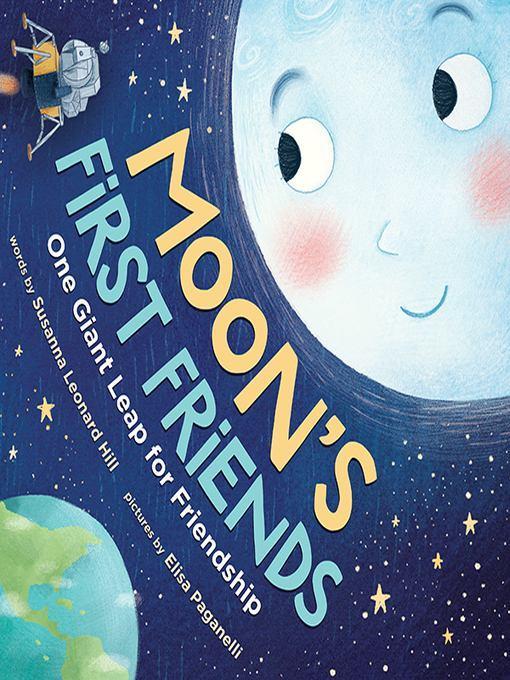
Moon's First Friends
One Giant Leap for Friendship
فرمت کتاب
ebook
تاریخ انتشار
2019
Lexile Score
640
Reading Level
2-3
ATOS
3.8
Interest Level
K-3(LG)
نویسنده
Elisa Paganelliناشر
Sourcebooksشابک
9781728213491
کتاب های مرتبط
- اطلاعات
- نقد و بررسی
- دیدگاه کاربران
نقد و بررسی

April 8, 2019
Hill imagines the Apollo 11 moon landing from the perspective of the moon itself. In Paganelli’s friendly illustrations, the moon is an anthropomorphic, bright-eyed blue sphere with rosy cheeks who communicates with the changing world throughout history. Despite how she tries to make friends, from saber-toothed tigers to early air balloonists, all of Earth’s denizens remain planet-bound. Not even an early airplane can reach her, and “a chimpanzee in a Mercury capsule... returned to Earth without reaching her.” At last, the moon meets the astronauts of Apollo 11: “The astronauts walked across her surface with great bounding steps that made her dust bloom.” Hill concludes this light moon-landing story with back matter, including photographs, a timeline of the Earth’s eras, and details about the Apollo 11 mission. Ages 4–8.

May 1, 2019
K-Gr 2-The Moon gets anthropomorphized in this celebration of the lunar landing. The Moon is the queen of the night sky, but she gets lonely and wishes for a friend. Finally, two astronauts visit, and the Moon gifts them with rocks and dust while they leave her a "handsome plaque" and a "beautiful flag." Too soon they have to leave, but the Moon is left with the hope that she'll host visitors again. This book could be used to introduce the Moon landing to very young audiences, but in its quest for simplicity, a lot of useful information is excluded. The Moon tries to get humanity's attention by traveling in front of the Sun, leaving her shadow on Earth, but the concept of eclipses isn't touched on even in the endnotes. The Moon gets excited when a chimpanzee travels in space in a "United States" branded Mercury capsule, and the American flag is prominently planted on its surface right before the astronauts leave, but there is no mention of the space race or any of the Soviet Union's accomplishments. The five pages of endnotes do offer some more comprehensive information on the Moon and details on the Apollo 11 voyage. VERDICT An additional purchase for large collections.-Kacy Helwick, New Orleans Public Library
Copyright 2019 School Library Journal, LLC Used with permission.

March 1, 2019
The Moon, lonely for so long, welcomes at last a pair of visitors from the planet below.It's a long wait--dinosaurs come and go, and likewise woolly mammoths; the pyramids rise; the first balloons and gliders appear; a chimp in a Mercury capsule waves from orbit--but at long last two spacecraft stacked atop a huge multistage rocket make the journey: "They're actually coming!" The Moon, a light blue orb in Paganelli's pastel-toned scenes with big, lashed eyes and pink cheeks, watches in delight, warmly welcomes the two astronauts who land, and gives them gifts of rocks and dust (they in turn leave a plaque and a brightly colored flag) when it's time to go. "Come back anytime!" Hill neglects mention of the earlier and later Apollo visits but enhances her lunarcentric commemoration of Apollo 11 with a detailed if idiosyncratic account of that one and QR codes leading to actual sound clips of the countdown and Neil Armstrong's first remark. Appended notes on the moon, NASA, spacesuits, and the Saturn V rocket also help to give the historic mission some background.One of a flurry of semicentennial tributes, set at least a bit apart by its unusual point of view. (Informational picture book. 5-7)
COPYRIGHT(2019) Kirkus Reviews, ALL RIGHTS RESERVED.

























دیدگاه کاربران